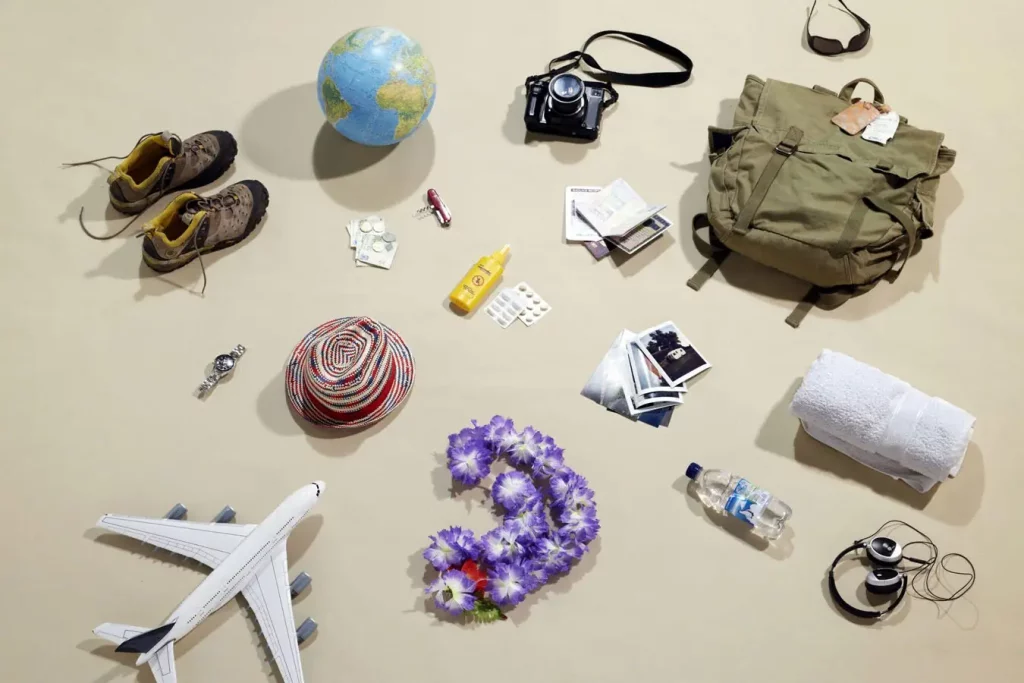Navigating how to pack a backpack for air travel can often seem daunting to many.
Fear not, as we’ve got the ultimate guide to ensure your essentials are both accessible and safe. Read on and get ready to jet-set with your perfectly packed backpack!
Choosing the Right Backpack for Air Travel
When embarking on an air travel adventure, selecting the right backpack is paramount. Consider the following factors to make an informed choice:
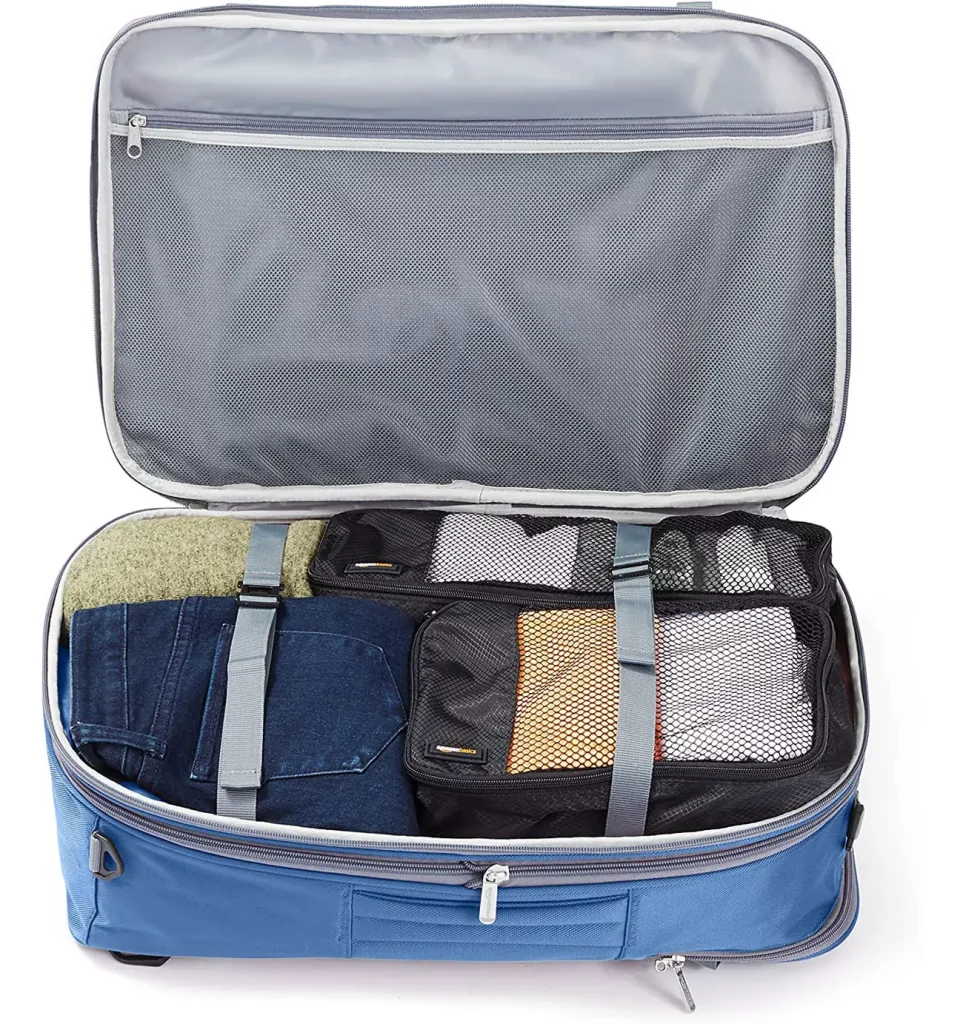
1. Size and Capacity
Opt for a travel backpack from Amazon that adheres to the airline’s carry-on regulations, typically around 22 x 14 x 9 inches. This ensures you can keep your backpack with you during the flight, avoiding checked baggage fees and potential loss or damage.
2. Comfort and Support
Look for a backpack with adjustable padded straps, a hip belt, and a back panel that provides sufficient ventilation. These features distribute weight evenly and reduce strain on your shoulders and back, enhancing comfort during long journeys.
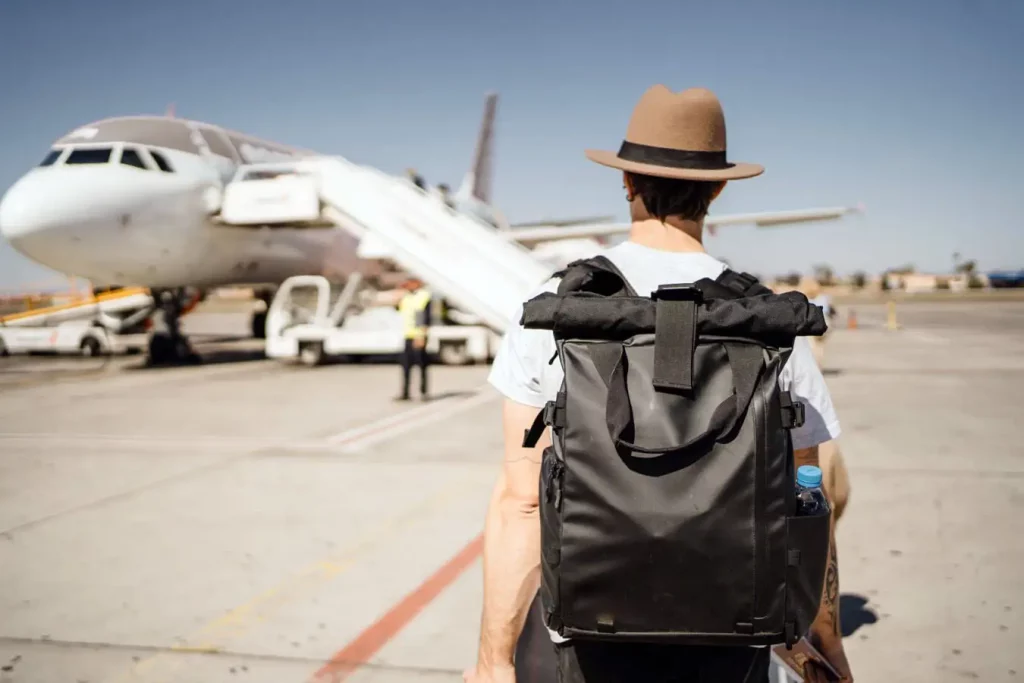
3. Durability and Quality
Invest in a well-constructed backpack made from sturdy materials like nylon or polyester. Reinforced stitching and robust zippers ensure your backpack withstands the rigors of travel.
How to Pack a Backpack for Air Travel
After choosing the right air travel backpack follow the given below steps to pack your backpack for air travel in right way:
Essential Items to Pack
Packing efficiently involves considering the essential items you’ll need during your trip. Let’s explore the key categories:
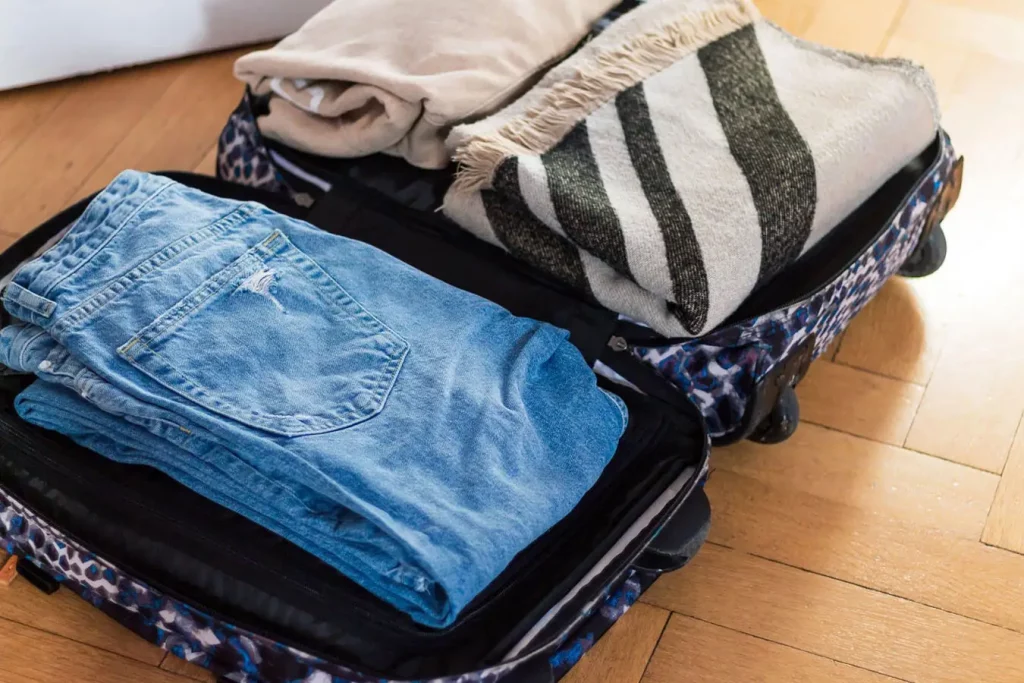
2. Clothing
When packing your backpack for air travel, it’s important to consider the appropriate clothing for your trip. Start by checking the weather forecast for your destination and plan accordingly. Pack versatile clothing items that can be easily mixed and matched to create different outfits. Consider the activities you’ll be engaging in and pack clothes suitable for those occasions.
It’s advisable to pack lightweight and wrinkle-resistant fabrics that are easy to pack and wear. Roll or fold your clothes neatly to optimize space and minimize wrinkles. Don’t forget to include essentials like underwear, socks, and sleepwear.
3. Toiletries
Toiletries are an essential part of any travel packing list. Remember to comply with TSA regulations regarding liquids. Pack travel-sized toiletries or transfer your preferred products into smaller, leak-proof containers. Include items like toothbrush, toothpaste, shampoo, conditioner, body wash, and any other personal care items you require. Place them in a clear, quart-sized plastic bag for easy access during security checks.
4. Electronics
In today’s digital age, electronics have become a necessity when traveling. Consider the electronics you’ll need during your trip, such as a smartphone, tablet, e-reader, or laptop. Don’t forget to pack the necessary chargers, adapters, and cables. It’s advisable to carry these items in your carry-on backpack to ensure their safety and availability during the journey.
5. Travel Documents
Proper organization of travel documents is crucial to ensure a smooth travel experience. Keep all your important documents together in a secure and easily accessible place. This includes your passport, identification cards, boarding passes, travel itineraries, hotel reservations, and any other relevant travel documents. Consider using a travel document organizer or a dedicated compartment in your backpack to keep them safe and organized.
6. Medications
If you take any prescription medications, it’s vital to pack an adequate supply for the duration of your trip. Remember to carry them in their original containers, clearly labeled with your name and dosage information. It’s also a good idea to carry a copy of your prescription or a doctor’s note, especially when traveling internationally.
Additionally, consider bringing over-the-counter medications for common ailments such as headaches, allergies, or stomach upset. Keep your medications in a separate pouch or compartment in your backpack for easy access and to ensure they are not misplaced.
How to Pack Clothes: Organizing Your Backpack
Efficiently organizing your clothes ensures easy access and minimizes wrinkles. Let’s explore some techniques:
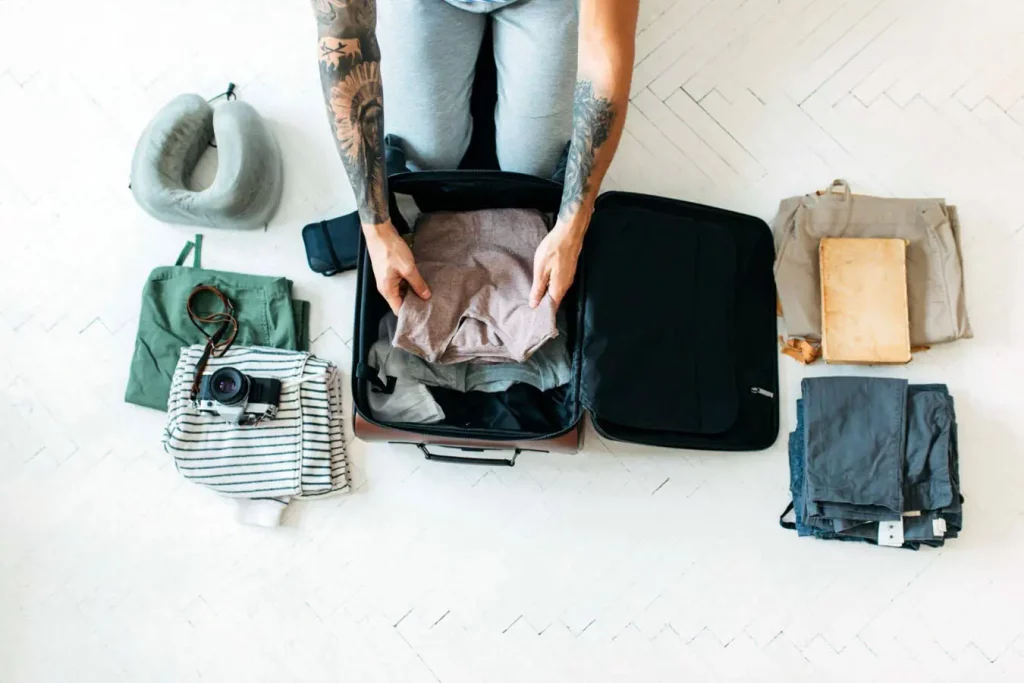
1. Rolling vs. Folding
When it comes to packing clothes, there has always been a debate between rolling and folding. Both methods have their advantages, so it ultimately depends on personal preference and the type of clothing you are packing.
Rolling clothes is a popular technique as it saves space and reduces wrinkles. It works best for items like t-shirts, casual tops, and lightweight fabrics. To roll your clothes, lay them flat, fold in any sleeves or collars, and then tightly roll them from one end to the other. This method not only saves space but also allows you to see each item clearly when you open your backpack.
On the other hand, folding clothes provides a neater and more organized appearance. It is ideal for items that tend to wrinkle easily, such as dress shirts or blouses. Fold the garments neatly, ensuring that any creases align with the existing seams. This method keeps your clothes flat and prevents excessive wrinkling.
To make the most of your packing space, consider combining both techniques. Roll smaller items like t-shirts and underwear, and fold larger items like pants and dresses. This hybrid approach allows for efficient use of space while minimizing wrinkles.
2. Utilizing Compression Cubes
Compression cubes are fantastic tools for maximizing space and keeping your clothes organized. These handy cubes come in various sizes and allow you to compress your clothes, reducing their volume significantly.
- To utilize compression cubes effectively, follow these steps:
- Sort your clothes by category, such as tops, bottoms, or undergarments.
- Fold each item neatly and place them inside the appropriate cube.
- Zip the cube closed, removing any excess air as you go.
- Apply pressure to compress the contents further.
- Repeat the process for each category of clothing.
Compression cubes not only save space but also help maintain the organization within your backpack. They allow you to group similar items together and quickly locate what you need without rummaging through your entire backpack.
3. Utilize Empty Spaces
When packing your backpack, it’s essential to make use of every inch of available space. One effective strategy is to utilize empty spaces within your backpack.
For instance, stuff socks, underwear, or small accessories like belts or scarves into shoes. These items fit snugly inside the shoes, utilizing the empty space and keeping everything organized.
Additionally, consider filling any gaps between larger items with smaller ones. For example, if you have a space between your folded clothes and the sides of your backpack, insert rolled-up socks or a tightly packed toiletry bag. By filling these empty spaces, you optimize the use of your backpack’s interior.
Remember to distribute the weight evenly while utilizing empty spaces. Placing heavier items closer to the center of the backpack helps maintain balance and prevents your belongings from shifting during travel.
4. Separate Items into Compartments
Keeping your belongings organized within your backpack is crucial for easy access and efficient packing. To achieve this, separate your items into compartments.
Packing cubes, small bags, or even resealable plastic bags can serve as effective compartments. Categorize your items and allocate specific compartments for each category. For example, have one compartment for clothes, another for toiletries, and a separate one for electronics.
By compartmentalizing, you can easily find what you need without creating a mess. It also prevents items from shifting around during transit, keeping your backpack tidy and organized throughout your journey.
Distributing Weight
Properly distributing the weight in your backpack enhances comfort and balance during your journey. Consider the following tips:
1. Heavy Items at the Bottom
When packing your backpack for air travel, it’s essential to distribute the weight properly to ensure comfort and balance. One effective strategy is to place heavy items at the bottom of your backpack, closest to your back. This arrangement helps maintain stability and prevents strain on your shoulders and back.
By placing heavier items lower in the backpack, you create a solid foundation that keeps the center of gravity closer to your body. This makes it easier to carry the backpack and reduces the risk of imbalance or discomfort during your journey.
2. Balancing the Load
In addition to placing heavy items at the bottom, it’s crucial to balance the load within your backpack. Distribute weight evenly on both sides to prevent the backpack from leaning to one side, causing strain or discomfort.
For example, if you have a heavy item on one side, balance it out by placing a similar weight or bulk on the other side. This balanced distribution helps maintain a symmetrical and centered load, making it easier to carry your backpack for extended periods. By consciously considering the weight distribution and balancing the load, you can ensure a more comfortable and enjoyable travel experience.
Secure Valuables
Protecting your valuables is crucial while traveling. Implement the following measures:
1. Keep Valuables in a Hidden Pocket
Ensuring the safety of your valuables is paramount while traveling. One effective method is to choose a backpack that includes a hidden pocket or a concealed compartment. These specially designed pockets are typically located on the interior of the backpack and are meant to keep your valuables discreet and secure.
It’s advisable to keep items such as cash, credit cards, passports, or other important documents in this hidden pocket. By storing your valuables in a hidden pocket, you minimize the risk of theft or pickpocketing, as these items are not easily visible or accessible to others.
2. Zippered Compartments
When selecting a backpack for air travel, consider one that offers multiple zippered compartments. These compartments provide an extra layer of security for your belongings. You can segregate different items into separate compartments, making them easily accessible and organized.
The zippered design ensures that your belongings are securely enclosed within each compartment, reducing the chances of items falling out or getting lost during your journey. Additionally, zippered compartments offer added protection against accidental spills or damage, keeping your items safe and intact throughout your travels.
3. Use TSA-Approved Locks
If you are checking your backpack as luggage, it’s advisable to use TSA-approved locks to secure the zippers. These locks are specifically designed to meet Transportation Security Administration (TSA) regulations. TSA officers have special access to open and relock these locks for inspection without causing any damage to your backpack.
By using TSA-approved locks, you maintain the security of your belongings while also complying with airport security protocols. These locks provide peace of mind, knowing that your backpack and its contents are protected during transportation and screening processes.
Also learn: How to Secure Backpack When Travelling
TSA Regulations and Restrictions
Before packing your backpack, familiarize yourself with TSA regulations and restrictions to ensure a hassle-free airport experience. Follow these guidelines:
1. Liquids and Gels
Remember the 3-1-1 rule for liquids and gels in your carry-on bag. Each container must be 3.4 ounces (100 milliliters) or less, and all containers must fit into a single quart-sized clear plastic bag. Place this bag in an easily accessible location for security screening.
2. Prohibited Items
Ensure that you do not pack any prohibited items in your backpack. Examples include sharp objects, firearms, flammable materials, and certain sports equipment. Familiarize yourself with the complete list of prohibited items to avoid complications during security checks.
Carry-on vs. Checked Baggage
Deciding between carry-on and checked baggage depends on the duration of your trip and your personal preferences. Consider the following factors:
1. Carry-on Baggage
Carrying a backpack as your carry-on luggage offers several advantages for air travel. Firstly, it provides convenience and saves time. With a carry-on backpack, you have all your essential belongings with you throughout the journey, eliminating the need to wait at the baggage carousel upon arrival. This not only saves time but also reduces the risk of lost or mishandled luggage.
Moreover, a carry-on backpack allows you to easily navigate airports and move around without the burden of a bulky suitcase. You can maneuver through crowded terminals, navigate security checkpoints swiftly, and have quick access to your belongings during the flight.
Additionally, packing a backpack as carry-on luggage gives you more control over your items’ security. You can keep valuables, important documents, and fragile items within reach, ensuring they remain safe and protected throughout the journey.
2. Checked Baggage
While carry-on luggage offers convenience, there are instances where checking your backpack as baggage may be more practical. If you plan to bring larger quantities of liquids, bulky items, or items restricted by TSA regulations, checking your backpack can be a viable option.
Checked baggage allows you to bring more items that might exceed the size or weight limitations imposed on carry-on bags. It gives you the freedom to pack larger quantities of toiletries, such as shampoo or lotions, without worrying about size restrictions.
Moreover, if you have items that are not allowed in the cabin due to their nature or size, checking your backpack ensures compliance with airline and security regulations. For example, if you plan to bring camping equipment, sports gear, or large containers of liquids, these items are typically more suitable for checked baggage.
However, it’s essential to consider the potential fees associated with checked baggage and the need to retrieve your bag at the destination baggage claim. Be mindful of the weight limitations imposed by the airline, as exceeding them may result in additional charges.
Ultimately, the decision between carry-on and checked baggage depends on the duration of your trip, the items you need to bring, and your personal preferences. It’s recommended to carefully assess your travel needs and the specific airline’s policies to make an informed decision on whether to carry your backpack on board or check it as baggage.
Preparing for Unexpected Situations
Traveling can present unexpected situations, so it’s essential to be prepared. Consider the following:
1. Pack a Change of Clothes
In case of lost or delayed baggage, pack a change of clothes in your carry-on backpack. This ensures you have fresh attire until your belongings are retrieved or replaced.
2. Emergency Essentials
Include emergency essentials in your backpack, such as a small first aid kit, a flashlight, a portable charger, and snacks. These items come in handy during flight delays, layovers, or unforeseen circumstances.
Tips for Easy Airport Security Check
Navigating airport security can be a breeze with these tips:
1. Remove Liquids and Electronics
When passing through airport security checkpoints, it’s important to streamline the process and ensure a smooth experience. One way to do this is by removing liquids and electronics from your backpack before reaching the security screening area.
To comply with TSA regulations, any liquids or gels in containers larger than 3.4 ounces (100 milliliters) must be placed in a clear, quart-sized plastic bag and presented separately during the security screening process. This includes items such as toiletries, creams, and even beverages. By removing these items from your backpack and placing them in a separate bag, you expedite the screening process and avoid potential delays.
Similarly, electronic devices such as laptops, tablets, and cameras should be removed from your backpack and placed in a separate bin for screening. This allows security personnel to get a clear view of these items and ensures efficient screening procedures.
By proactively removing liquids and electronics from your backpack before reaching the security checkpoint, you not only save time but also contribute to the overall smooth flow of the screening process for yourself and other passengers.
2. Wear Easy-to-Remove Shoes and Accessories
When preparing for airport security checks, it’s beneficial to wear shoes and accessories that are easy to remove and put back on. This helps expedite the screening process and ensures a hassle-free experience for both you and other travelers.
Choose shoes that can be easily slipped on and off, without the need for complicated laces or buckles. This allows you to swiftly remove and replace your shoes during the security check, reducing the time spent in line and minimizing inconvenience.
Additionally, consider your choice of accessories. Avoid wearing excessive jewelry, belts with large buckles, or accessories that may trigger the metal detector. If you do wear such items, be prepared to remove them quickly and place them in a bin for screening. Opting for minimal accessories simplifies the process and helps you move through the security checkpoint efficiently.
Tips for a Comfortable Journey
Make your air travel experience more comfortable with these suggestions:
1. Dress Comfortably
When embarking on air travel, it’s crucial to dress comfortably for a more pleasant journey. Opting for clothing made from breathable fabrics, such as cotton or linen, can help regulate body temperature and prevent discomfort caused by overheating. Loose-fitting attire allows for freedom of movement and reduces restrictions during long flights.
Consider wearing layers to accommodate changes in temperature onboard the aircraft. Airplanes can vary in temperature, so having a light sweater or jacket handy is advisable. Additionally, choosing comfortable footwear, such as sneakers or slip-on shoes, can provide adequate support and prevent discomfort during extended periods of walking or standing.
Dressing comfortably not only enhances your overall travel experience but also allows you to relax and enjoy the journey with ease.
2. Stay Hydrated and Move Around
During air travel, it’s important to prioritize your well-being by staying hydrated and engaging in movement whenever possible. The cabin environment tends to be dry, which can contribute to dehydration. Be sure to drink plenty of water before, during, and after the flight to stay hydrated and minimize the effects of dry air.
Furthermore, prolonged periods of sitting can lead to discomfort and reduced circulation. To counteract this, take short walks or do simple stretching exercises periodically. Moving around the cabin not only helps alleviate muscle stiffness but also reduces the risk of blood clots and promotes better circulation.
By staying hydrated and engaging in regular movement, you can enhance your comfort and well-being throughout the journey, arriving at your destination feeling refreshed and energized.
FAQs about Pack a Backpack for Air Travel
Can I bring a carry-on backpack and a personal item on a flight?
Most airlines allow passengers to bring a carry-on backpack and a personal item, such as a small purse or laptop bag, on board. However, it's essential to check the specific size and weight restrictions imposed by your airline.
Are there any items that are prohibited in a backpack during air travel?
Yes, there are certain items that are prohibited in both carry-on and checked-in luggage. These include sharp objects, flammable substances, firearms, and explosives. Always review the TSA guidelines and the regulations of the airline you're flying with to ensure compliance.
How can I prevent my backpack from getting lost or damaged during air travel?
To minimize the chances of your backpack getting lost or damaged, make sure to tag it with your contact information. Additionally, consider investing in a backpack cover or wrapping it in a protective layer. Opting for a durable backpack made from quality materials can also reduce the risk of damage.
Can I pack food and snacks in my backpack for air travel?
Yes, you can pack food and snacks in your backpack. However, keep in mind that certain fresh or liquid items might be subject to additional security checks. It's recommended to pack non-perishable snacks and avoid liquids that exceed the specified limits.
Is it necessary to weigh my backpack before air travel?
It's advisable to weigh your backpack before air travel, especially if you're flying with a low-cost or budget airline. Many airlines have specific weight restrictions for carry-on luggage, and exceeding these limits may result in additional fees or having to check in your backpack.
Final words
Efficiently packing a backpack for air travel requires careful consideration and organization. By choosing the right backpack, packing essential items strategically, distributing weight properly, and securing valuables, you can optimize your travel experience.
Familiarize yourself with TSA regulations, decide between carry-on and checked baggage, prepare for unexpected situations, and follow tips for an easy airport security check. With these insights, you’re well-equipped to embark on your next air travel adventure with confidence and ease. Happy travels!

